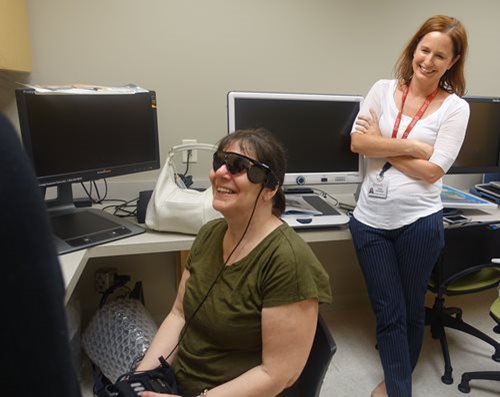Retinitis Pigmentosa Awareness Month
February is Retinitis Pigmentosa (RP) Awareness Month. RP is a rare, genetic disorder that damages the retina – the light-sensitive tissue in the back of the eye. It is estimated that 100,000 people in the U.S. have RP, mainly caused by genetic mutations inherited from one or both parents.
Early symptoms of RP usually begin to show in childhood. Because there are many genetic mutations that cause this disorder, its progression can differ greatly from person to person. Some of the symptoms of RP include affected night vision and difficulty seeing peripheral vision.

While there is no known cure, extensive research is being done to find new treatments. A few of the current low vision management options help to slow vision loss and even restore vision.
Some of these options include:
- Utilizing computer programs that read text
- Portable lighting devices that can be used to brighten a dark or dim environment
- Mobility training to help people use a cane or guide dog
- Wearing sunglasses
 Another treatment option is an artificial vision device called the Argus II – also known as a retinal implant. It is intended to provide electrical stimulation of the retina to induce visual perception in individuals with RP.
Another treatment option is an artificial vision device called the Argus II – also known as a retinal implant. It is intended to provide electrical stimulation of the retina to induce visual perception in individuals with RP.
In 2017, The Eye Institute (TEI) worked with its first retinal implant patient. Rose Marie Wade was diagnosed with RP in her early 20s, leaving her with very minimal light perception in her right eye and none in her left eye. After receiving the retinal implant, Wade worked closely with an interdisciplinary team at the William Feinbloom Vision Rehabilitation Center, housed at The Eye Institute, to help her adjust to her new vision capabilities.
For more information on low vision services call 215.276.6111 to schedule your appointment today!